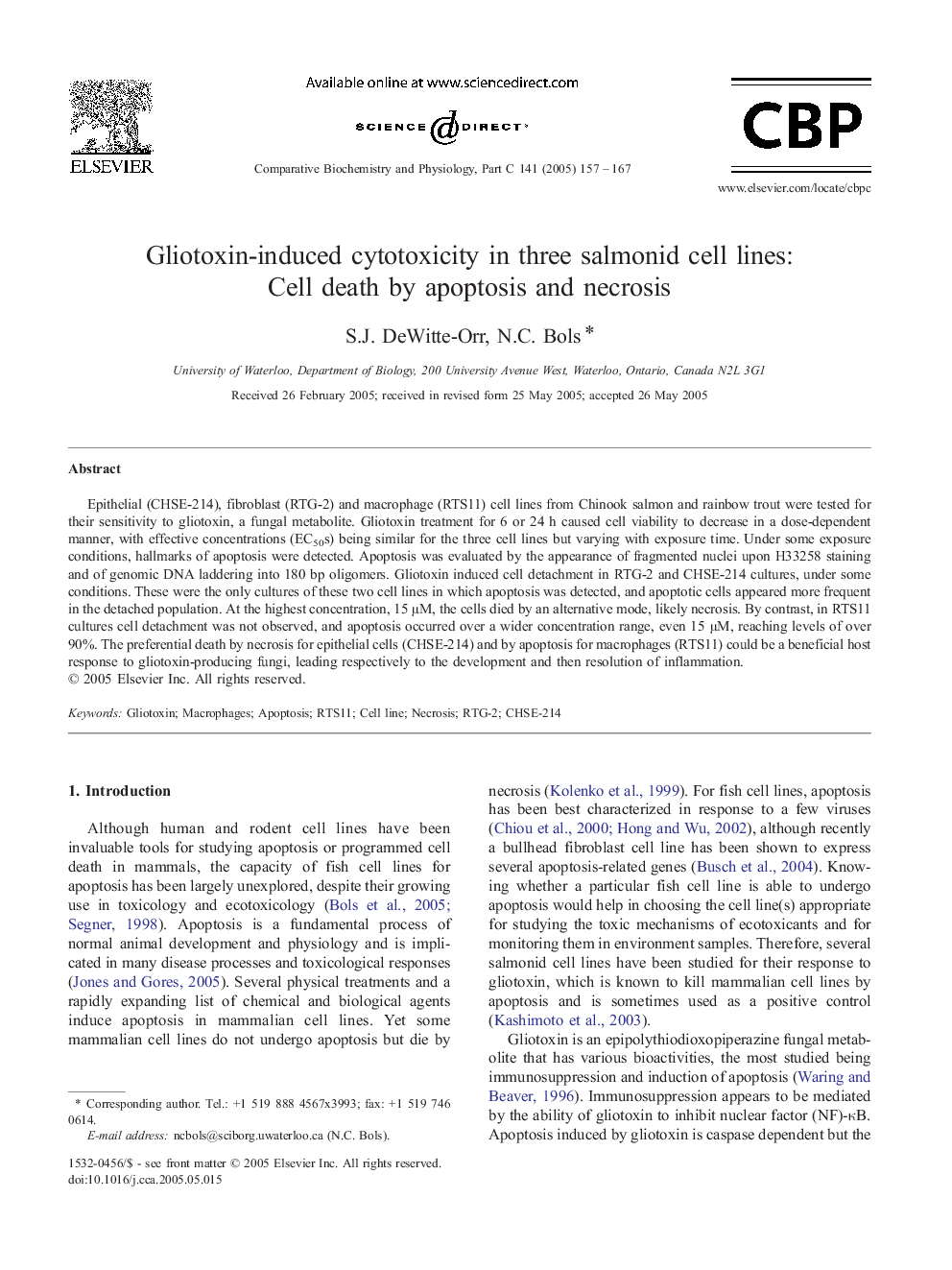| Article ID | Journal | Published Year | Pages | File Type |
|---|---|---|---|---|
| 10821795 | Comparative Biochemistry and Physiology Part C: Toxicology & Pharmacology | 2005 | 11 Pages |
Abstract
Epithelial (CHSE-214), fibroblast (RTG-2) and macrophage (RTS11) cell lines from Chinook salmon and rainbow trout were tested for their sensitivity to gliotoxin, a fungal metabolite. Gliotoxin treatment for 6 or 24 h caused cell viability to decrease in a dose-dependent manner, with effective concentrations (EC50s) being similar for the three cell lines but varying with exposure time. Under some exposure conditions, hallmarks of apoptosis were detected. Apoptosis was evaluated by the appearance of fragmented nuclei upon H33258 staining and of genomic DNA laddering into 180 bp oligomers. Gliotoxin induced cell detachment in RTG-2 and CHSE-214 cultures, under some conditions. These were the only cultures of these two cell lines in which apoptosis was detected, and apoptotic cells appeared more frequent in the detached population. At the highest concentration, 15 μM, the cells died by an alternative mode, likely necrosis. By contrast, in RTS11 cultures cell detachment was not observed, and apoptosis occurred over a wider concentration range, even 15 μM, reaching levels of over 90%. The preferential death by necrosis for epithelial cells (CHSE-214) and by apoptosis for macrophages (RTS11) could be a beneficial host response to gliotoxin-producing fungi, leading respectively to the development and then resolution of inflammation.
Related Topics
Life Sciences
Biochemistry, Genetics and Molecular Biology
Biochemistry
Authors
S.J. DeWitte-Orr, N.C. Bols,
